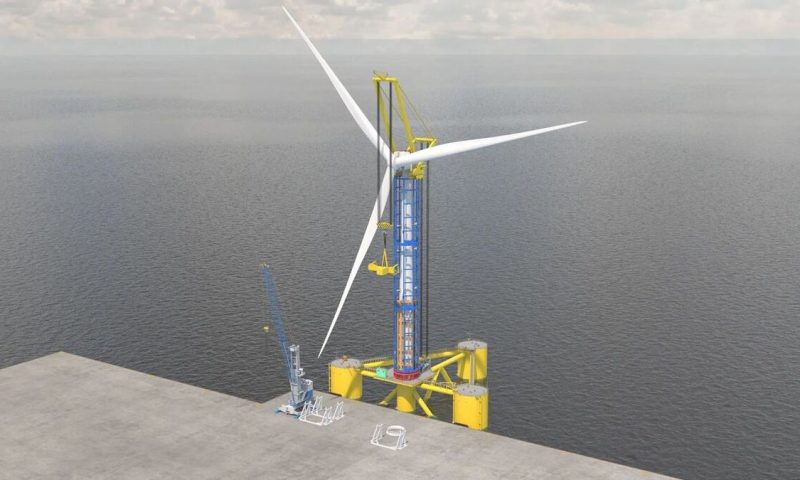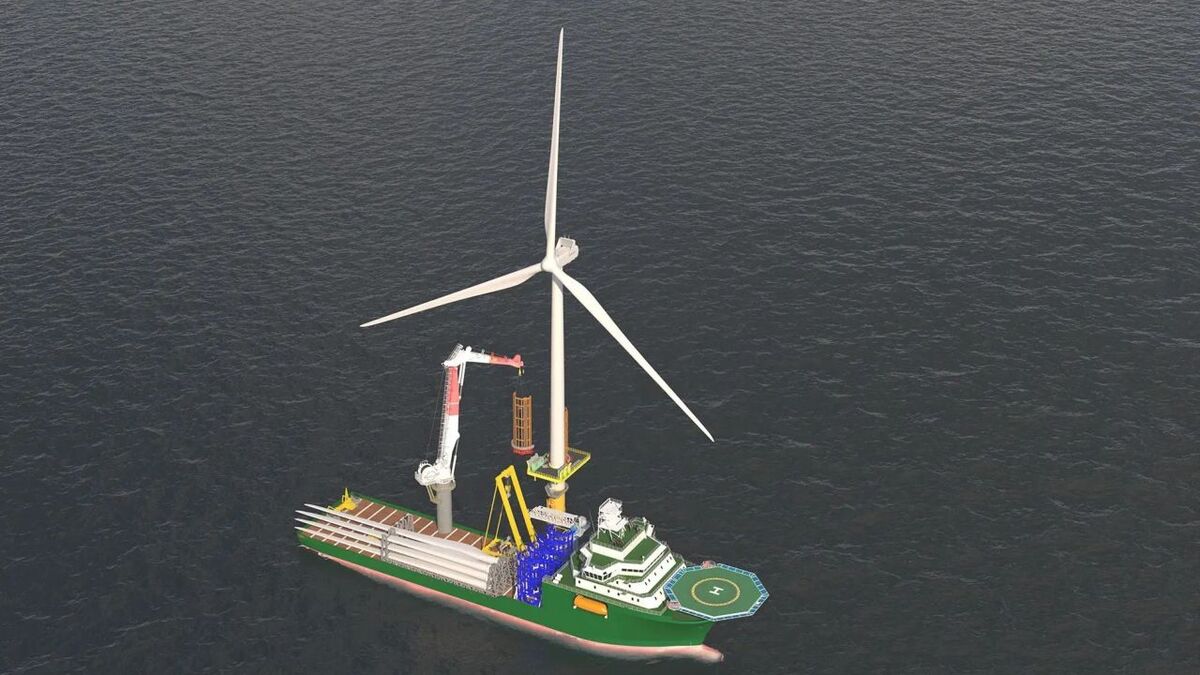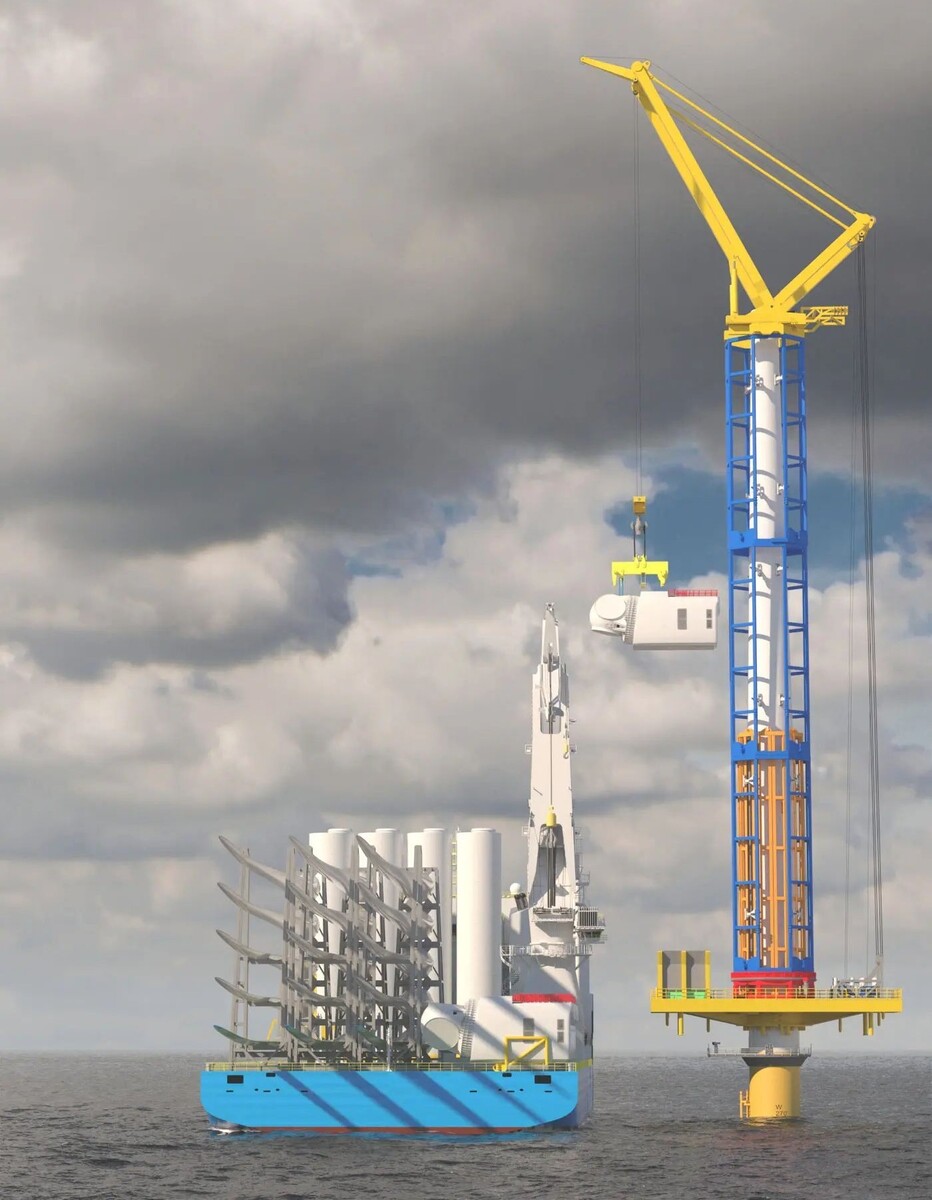
Innovative installation solution could help meet rising demand for offshore wind turbines
Recent months have seen the already fast pace of growth in the offshore wind industry accelerate, heightening concerns about whether there will be enough wind turbine installation vessels to meet demand.

More and more countries are announcing plans to build offshore windfarms, and targets in many existing markets have been raised, in some cases, for the second or third time in a matter of a few years. By some estimates, the offshore wind pipeline has grown 20% in the last couple of months alone.
The supply chain obviously needs to ramp up quickly, but how will so many offshore wind turbines be installed when, by the mid-2020s, analysts assert, there is likely to be a dearth of installation vessels able to install 15-MW plus turbines?
Questions were raised about whether there would be enough installation vessels even before the latest spurt in the growth of the project pipeline and, with recent newbuilds costing in the range of US$300-350M, there is a growing need for new ways to install turbines and do so more economically.

The answer could lie in a number of much more flexible installation concepts that are being developed, including one, the WindSpider, which secured a Nkr8.9M (US$1.0M) grant from Innovation Norway in March 2022, having secured investment from industrial and financial investors, in addition to existing shareholders in November 2021.
As WindSpider chief executive Kent Lynggaard Vinkel and chief financial officer and commercial director André Ølberg explained, the funds will help the company progress the development, qualification, and commercialisation of the new concept.
Mr Vinkel came to WindSpider in late 2021, having worked for several years at wind turbine company Vestas. Mr Ølberg has experience in M&A, financing and strategic development and came to the company from HitecVision, so both bring indepth understanding of the wind energy industry and of the offshore market.
As they told OWJ in an exclusive interview, WindSpider is a universal, self-erecting solution for the installation of offshore wind turbines that uses the tower of a turbine as part of the crane when undertaking installation, maintenance, repowering, and decommissioning. It has a lifting capacity of 800-1,200 tonnes and is a scalable concept that could, Messrs Vinkel and Ølberg assert, go beyond 1,200 tonnes, if required.

Installation using WindSpider doesn’t require any changes to the turbine and it is suitable for use with turbines of all types. It has been designed to operate in wind speeds and significant wave heights similar to those in which conventional installation operations take place.
Having been transported offshore, it attaches itself to the tower and moves up and down using mast sections. At each step upwards, it lifts the next section of the tower or turbine, including the nacelle and rotor blades. When installation is complete, the reverse process occurs – the WindSpider lowers itself back to the start point at the base of the tower and is lifted off it. It can be transported to, and lifted onto and off, the tower of a turbine using a number of different vessels that have very much lower day rates than a jack-up installation vessel. All that is required is a vessel with a large unobstructed deck capable of transporting the WindSpider and components for five to six offshore wind turbines.
Apart from eliminating the need for a specialised installation vessel with a crane, dramatically enhancing availability of installation assets as the industry expands and reducing the carbon footprint associated with installation operations, WindSpider has another advantage compared to conventional installation – there is no relative movement between the WindSpider crane and the wind turbine during the installation process.
The concept has been designed from the outset to handle next-generation offshore wind turbines of 15 MW or more and has sufficient lifting capacity to install or replace all of the parts of an offshore wind turbine, including the nacelle.
Interestingly, given the fast pace of growth in the floating wind market, it can also used at a port or assembly site, as well as offshore, to install floating wind turbines, and used to enable the maintenance and replacement of parts for floating wind turbines while they are offshore.
All of the above could significantly reduce the levelised cost of energy of offshore wind, said Mr Vinkel. In fact, a scalable, modular solution like WindSpider can reduce end-customer cost by in excess of 50%, the company believes, while installing turbines at a similar rate to that achieved with a jack-up vessel.
Designed for use in harsh environments and challenging offshore conditions, WindSpider can also reduce turbine downtime should maintenance be required – the company is developing a number of versions of the WindSpider, including a ‘WindSpider Lite,’ potentially based on a converted offshore construction vessel, which could be used to change blades or replace a gearbox.
At the time of writing, WindSpider was progressing a technology qualification process with classification society DNV, a process it expects to complete in Q3 2022. It plans to use a simulator it will begin developing later this year to progress further development of the system and train operators and hopes to be in a position to build a full-scale system in 2023, which should be ready for test in 2024.
In the short-term, the company wants to secure a customer for the beta version of the system. That beta unit will be ready for use in 2024, at which time WindSpider will partner with a vessel owner/provider and a wind turbine service provider. In the long-term, the objective is to become a preferred solution for installing and maintaining wind turbines and a ‘one-stop-shop’ for installation and maintenance of offshore wind turbines, together with partners.
“We have ongoing dialogue with a number of developers and OEMs about our solution, and WindSpider has been very well received in the market,” Mr Vinkel concluded.








